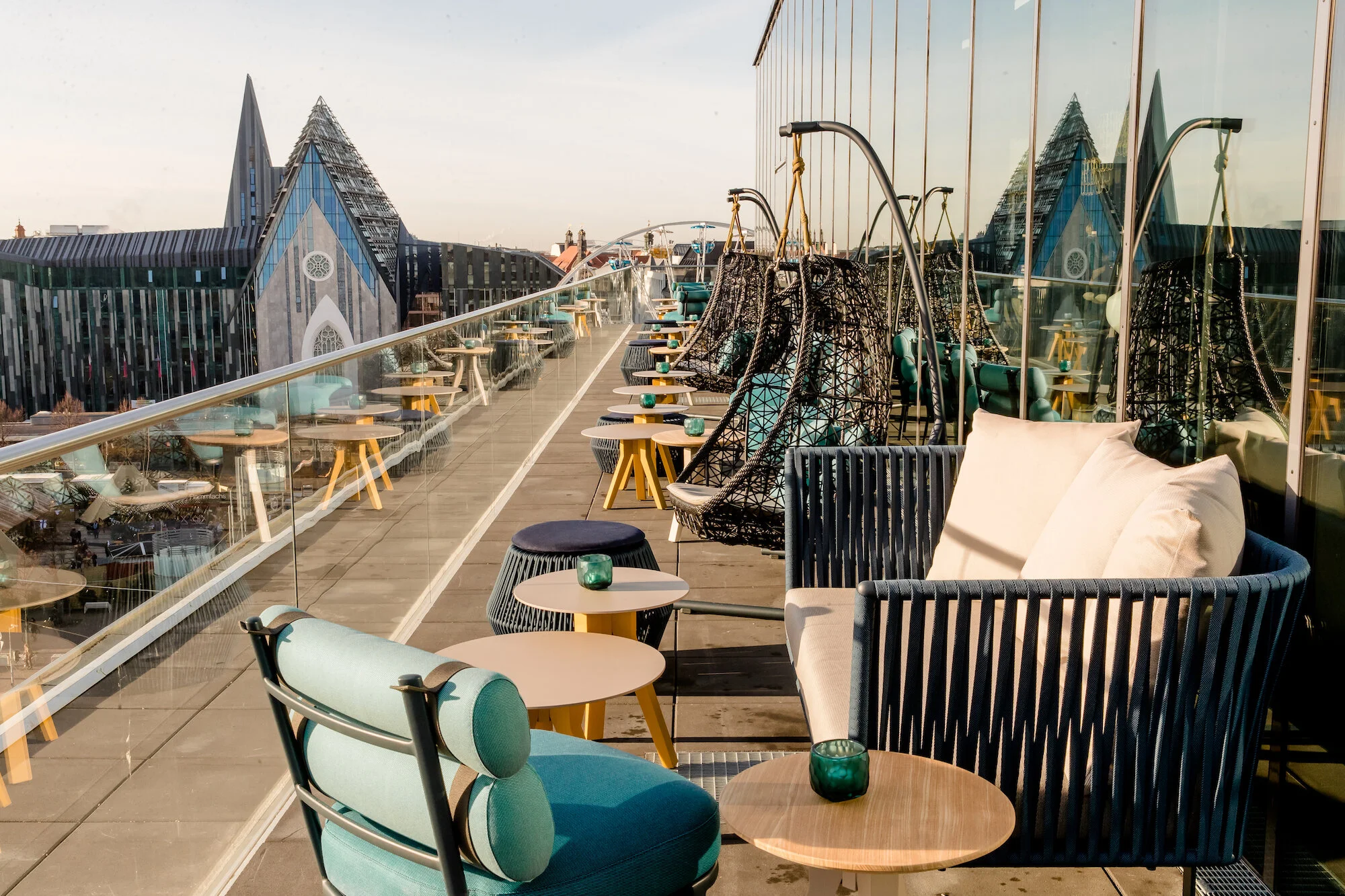Passage to Leipzig
Words by Kristen Cosby
An hour and half south of Berlin by train, I disembarked in Leipzig and crossed into the old city through an uncovered alley called Ritterspassage. Within the ring-road that demarks where the walls of Leipzig’s old city once stood, lies a warren of hidden passages and covered courtyards. 30 all told, within the one square kilometre city centrum. In centuries prior, the passages allowed horse-and-cart drivers to manoeuvre through Leipzig’s bustling markets and Hofs, or covered trading arcades, where goods could be displayed, traded, and sold while protected from the elements. These trading halls were integral to the city’s development as a trading and cultural powerhouse, thus they have remained integral to the old city’s layout and architecture over the last 500 years. If you traverse them all, you will have thoroughly acquainted yourself with Leipzig’s inner city.
My guide, Johannes Goeckeritz, introduced me to the three most historic passages of Leipzig. Leading me first through the most famous one: Mädlerpassage. This early-20 century, 140 m long, five-story shopping arcade, made bright by its arched glass ceilings, stands on the site where Heinrich Stromer of Auerbach, a rector at Leipzig University, completed the city’s first trade hall, Auerbach Hoff, in 1538. Inside, three bronze figures depicting a scene from Goethe’s Faust mark the entrance to Auerbach’s Keller, the famous wine-cellar and tavern so frequented by Goethe that he set the first scene of “Faust” within its walls. The passage intersects with two others: Königshauspassage and Messehofpassage, creating a small maze of glittering shopfronts between streets.
In all the courtyards and passages, Johannes instructed me, it is important to look up. We cross Markt, the market square at the heart of the old city, to Barthel’s Hoff, a trade courtyard built between 1747-1750, the sole remaining one of its era. He pointed to the cranes atop the highest windows once used for raising and lowering of goods into the warehouses above. Johannes told me that many of the interior of the passages and arcades have been decorated to celebrate the goods once traded there. Like the copper ceiling of the entrance to Speck’s Hoff, the oldest preserved passage in Leipzig, just across the main drag, Grimmaische Strasse, from Mädlerpassage. The copper was fashioned to resemble finely tooled leather in celebration of the arcade’s use as an exhibition space for leather goods and jewellery. Many of the passages and arcades fell into disrepair in the GDR era. In 1989, after the reunification of East and West Germany, when this passage underwent renovation, the walls of the Speck’s Hoff interior atriums were embellished with a series of paintings, murals and ceramic tiles depicting different trades and professions.
Since the reunification and as part of Leipzig’s relatively recent revitalisation, the passages and arcades have been returned to their former glory. Most for their original purpose: the display of luxury items. With the edition of new modern passages, the maze of the inner city has expanded in recent years serving as shopping venues, shortcuts between Leipzig’s rich historic sites such as the Bach Museum (across the street from where Bach once lived, composed, and conducted the St. Thomas boys choir) and St. Nicolas church (where Germany’s Peaceful Revolution and the movement that resulted in the Fall of the Berlin Wall began). Perhaps the best time to tour them is the first Friday of September, when the city celebrates the historic importance of its unique passage system with a festival.
I wound my way through the remaining passages and courtyards in a kind of treasure hunt: finding statues, fountains, giant mushrooms, a green horse statue. After duck and potato dumplings and Riesling at Restaurant Weinstock in Markt Square, I used Theaterpassage, my own small shortcut to journey to my chic, snug room at Motel One Leipzig-Post housed in the former post-office building just outside the old city. Using the passage to shelter from the wind and rain as Leipzigers have for centuries.












